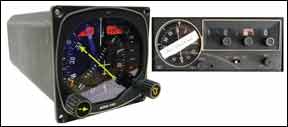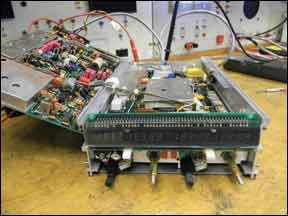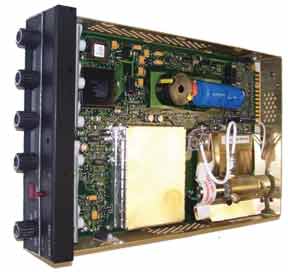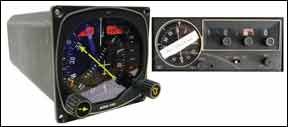Considering that a major avionics upgrade could outprice the aircraft, it makes sense to consider repairing—instead of replacing—your existing equipment. While this might seem like a good short-term solution, you might be throwing good money after bad.

The repair versus upgrade decision might depend on your mission and whether the unit will be used for primary or backup. Consider three questions: How much does a like-exchange cost? How much serious IFR do you fly? Does the manufacturer still support the equipment? Be careful of using the excuse that you might sell the aircraft soon—selling with old radios works in the buyer’s favor.
In this article, we’ll address the repair versus replacement decision.
We won’t address autopilot systems because we covered them in the May 2013 issue of Aviation Consumer.
NavComm 101
Back in the day, you were the envy of the airport if your panel sported dual King KX155 or Narco MK12D digital navcomms. These days, that same panel begs to be upgraded. But there’s still a place for standalone comm and nav radios—especially for secondary backup.
How old is too old? It depends. First, there’s the Narco dilemma. There are still plenty of Narco MK12D navcomm radios in service (as we’ll as Com810 transceivers and Nav825 nav receivers), but with Narco out of business, the remaining supply of service parts is approaching depletion. If you’re lucky, the failed electronic components might be substituted with generic replacements. However, the supply of common parts—including displays—are difficult to find.
Still, before rendering the unit a boat anchor, we think it’s worth having your shop evaluate it. Our local shop recently sourced a new display for an MK12D. It came from an individual who once stashed it in his spare parts inventory. It sold for nearly $300. With labor and paperwork, it turned into a $500 repair. That’s about the most we would spend on the orphaned navcomm.
You’re in far better shape if you own a King KX155. However, failures of the gas discharge displays are routine maintenance events that tally a shop invoice of around $400 to $500. Still, that’s a repair we think is worth it. The KX155—which is built with and without integral glideslope receivers and in 14 and 28 volts—make fine secondary radios. We would be hard-pressed to scrap one unless it needed a new transmitter or receiver board or any other bench repair that ran the tab higher than $1000 or so.
Other common radios include the Collins MicroLine. These are the square-bezel, standalone comm and nav radios. If repairs will exceed anything more than display segment replacements—which might cost $200 per digit—we think an exchange radio might be a better choice. But, be sure to find a replacement with a high serial number and high mod status. Experienced shops know which mods make these decent radios, at least for backup.
What about Cessna radios? RT300 and 400 series radios are simply easier to exchange than repair. As of 2011, Texas State Technical College’s avionics repair station assumed the repair and servicing operations of Airwich Avionics—once the leader in all things ARC, Sperry and Cessna radio repair and exchanges. We can’t vouch for the same quality of repair and exchange service that Airwich was known for, but Airwich.com lists the RT385A—that’s the 28-volt ARC navcomm—exchanged for $595.
Speaking of exchanges, the used market has reasonable deals on the TKM MX-series slide-in replacement radios. These are the digital nav and comms for sliding into the racks and the existing wiring of King KX170, Cessna RT300 and some Narco navcomm installation.

Transponders
When it comes to old transponders, replacement is often the best option—unless the repair entails a basic alignment or other minor work. Cap transponder repairs at $500. That’s because budget transponders offer a long list of modern features and growth potential (see our coverage of them in the October 2012 issue of Aviation Consumer).
Models worth repairing—or retaining for a backup—include the venerable Bendix/King KT76A. The unit’s 200-watt power output is oscillator driven, meaning it’s not solid state. Its analog tuning doesn’t win any awards for gee-whiz appeal, either. But later versions of the KT76A was built with surface-mount technology—a more efficient design, but difficult to repair without having to shotgun entire circuit board assemblies.
Since the KT76A isn’t solid state, the cavity oscillator tube is a costly replacement—near $1000 total—and you may face that if you keep this unit long enough. The cavity is also a source of heat. The KT76A was, however, the first of its kind to utilize LSI (Large Scale Integration). LSI reduces weight, allowing longer service life and increased performance. It’s no surprise that these units remain the workhorse of the transponder fleet.
When faced with a transponder repair, we strongly suggest getting a quote for a new replacement. In many cases, you can get into a new, entry-level unit for under $2000. This is a good long-term plan—and one you can still use when the ADS-B mandate hits. That’s because traditional transponders will still be required in a full-up ADS-B world.
What about major repairs to the popular Narco AT50 and AT150 line of transponders? Forget it. They just aren’t a long-term solution given the lack of support. On the other hand, they are good performers. Ask your shop how healthy it is when they perform routine FAR 91.411 certifications and plan accordingly.
HSI Dreams
A failed HSI system may seem like a good excuse for upgrading to a PFD and in many cases, it is. No matter what model HSI you have, you owe it to the airplane to at least price the Aspen EFD1000 retrofit glass. But even bottom-line pricing for an entry-level flight display retrofits is far more than it will cost to overhaul or even replace an existing 30-year-old mechanical HSI.
Aspen’s EFD1000Pro PFD will set you back $15,000, on average. While this is arguably a sizeable bang-for-the-buck upgrade, it may not make sense for some panels needing other more pressing work.

We think there are two analog HSI systems worth keeping, or even installing in the right circumstances: the Century NSD360A and the Bendix/King KCS55A. But each system comes with caveats. The NSD360A can be a slaved or non-slaved (that latter means you need to correct for gyro precession as you would a plain-vanilla DG), vacuum-driven and self-contained model that’s found in various flavors.
The double-edged sword with these is that the low entry cost comes with limited life between overhauls and a complicated design of finicky belts, gears and meter movements. A complete overhaul of this unit from a top-drawer instrument lab is just shy of $3000. Some shops might attempt a repair, yielding a sizeable savings over a complete overhaul. But others, including Mid Continent Instruments and Avionics, almost always find a problem that requires a complete overhaul. Whether you agree with this shotgun overhaul mentality or not (we don’t) eventually, most every NSD360A will require an overhaul.
Bendix/King’s once-flagship, all-electric KCS55A system has a longer service interval. But when the system does fail, get ready for an impressive shop bill. That’s because there are two high-priced components: the KI525A HSI and KG102A remote electric heading gyro. An overhaul or exchange of either one is several grand. Some earlier KG102A gyros aren’t worthy of exchange or overhaul due to parts obsolescence, so your only choice could be a new or salvaged one.
The good news: The market is flooded with good KCS55A systems at reasonable prices, since many of these systems have been removed during PFD upgrades. Before dropping $2500 on a complete overhaul, search the market for a serviceable replacement.
As for vintage HSI systems, no shop in their right mind would attempt doing any kind of billable repair to old Narco models like the DGO series and later HSI100. In our view, these should have been in the rubbish barrel years ago. Luckily, most of them are.
Do the Math
The rule of thumb is to limit repair costs to the price of an exchange. When old avionics finally bite the dust, it’s natural to consider replacing the stack with used GNS430 and GNS530 all-in-one navigators. In our estimation, this is a good plan. For plain-vanilla IFR, a single GNS430, audio panel and transponder can make a fine avionics package. It also makes economic sense for some missions and aircraft.
Replacing an ancient navcomm with a new Bendix/King KX155A can cost upward of $7000, after installation. Garmin’s new GNC255 series navcomm might be a tad cheaper, but neither option adds IFR GPS. That’s why the GNS430—either legacy or WAAS—still represents a good bang-for-the-buck upgrade. These units are discontinued, of course, but we have no concerns about Garmin’s long-term support.
Don’t expect many stellar deals on used GNS WAAS units. Our search of the used market found GNS430Ws selling for around $7000, while the GNS530W can sell for nearly $9000. Legacy GNS430s might be had for around $5000 and legacy GNS530’s for around $7000. This isn’t chump change, but for aircraft that need an upgrade, we think it’s a better long-term solution than repairing orphaned equipment. It can also make the aircraft more attractive during resale.


